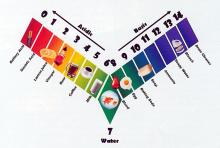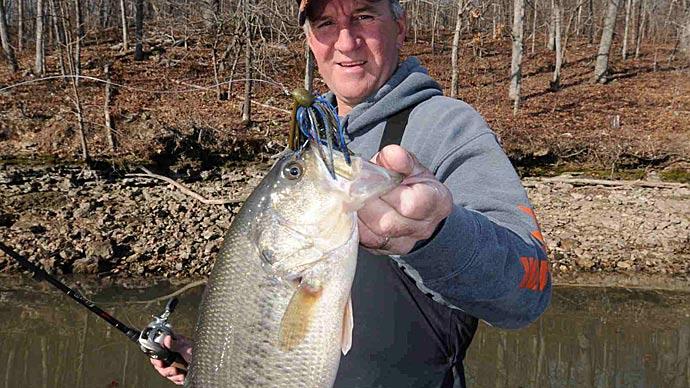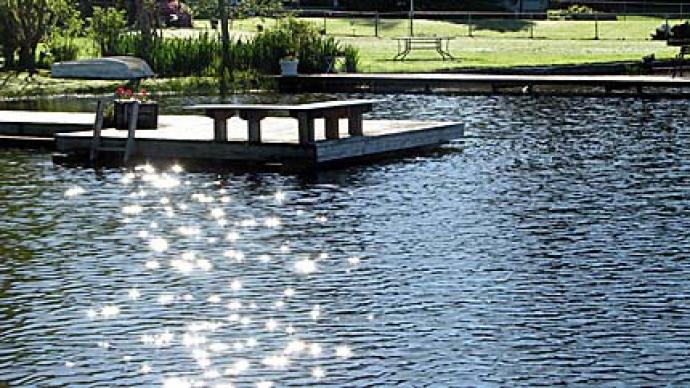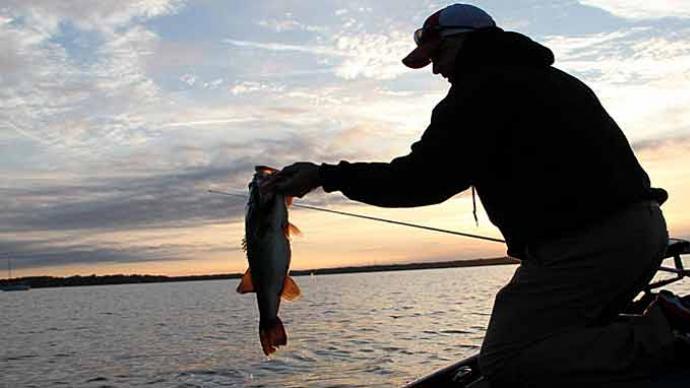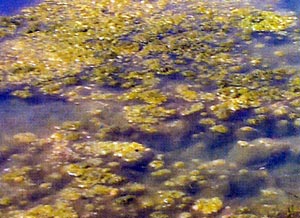
As we are all aware, pond management is not always as simple as we'd like it to be, but it's the complexities and problems that make the challenge of pond management so fulfilling. There are certainly management aspects with which we could be more familiar to help us gain more answers than questions. In this segment we're going to cover basics of water quality, and in this first installment, the focus is on your pond's pH. We've all heard of it, but what do we actually need to know? Turns out, pH is more than just a two letter abbreviation for anti-itch cream. It actually tells you a lot about the pond you manage.
What is it?
Well, simply put, pH is a measurement of how acidic or basic your water is. The scale runs from 0, being the most acidic, to 14 being the most basic, while 7 is the pH of pure water. To get a feel for what falls on either end of the spectrum, think of acidic lemons on the low end (about a 2) of the scale and baking soda on the basic side with a pH of about 12.
An important thing to remember when measuring pH, which we'll talk about how to do later, is that each number represents a 10- fold change. So, a hot cup of black coffee on a brisk autumn morning with a pH of 5 is ten times more basic than an ice cold beer on a Friday afternoon with a pH of 4. So, that begs the question: what does that have to do with my lake?
Why is it important?
pH is one of those things that has more influence on your lake's ecosystem than you think. In one sense, you can think of it as a measure of how ideal your lake's water is for your fish to thrive. If your lake is too acidic or too basic, it simply doesn't make for an environment in which your fish want to do things like eat or reproduce. In terms of our own bodies, taking a shower in water with a pH similar to vinegar (3) or anywhere near ammonia (11.5) wouldn't be too comfortable and chances are we'd shut the water off right quick. The same goes for your crappie hole or your monster bass pond—if the pH falls outside their acceptable range, life isn't so good for the fish or the thousands of aquatic organisms that call it home-sweet-home. pH is also influential in determining the availability of certain nutrients and heavy metals. Keep in mind though, pH can be a very temporary water quality parameter and can change constantly, so testing a water sample last week may not tell you squat about your current water pH. Now that we know what it is and why it matters, what in the world determines pH?
What Determines pH in a pond?
Your lake is unique, that we know. Your soil, your rainfall, your depth and slope and the land around it—you take pride in it. All these things are instrumental in determining the pH of your pond. Your dirt or bedrock probably plays the biggest role. Georgia red clay, for example, is going to be more acidic (have a lower pH) than pond dug out of a limestone quarry and your pond's water will show it.
Algae growth also plays a part. See, algae are big contributors to the health of your water in that they use up carbon dioxide (C02) and give back oxygen- both sides of that ball benefit your fish. But, (and this is a big one), at nighttime the script gets flipped and algae are programmed to do just the opposite of what they do during the day. At night, they use up oxygen and expel carbon dioxide. Carbon dioxide dissolved in water forms a mild acid and it just so happens that as carbon dioxide goes up, pH goes down. Then, as the sun rises, plants and algae begin photosynthesis, thereby consuming C02 and causing the pH to rise, or become more basic, as the day goes on. * Algae blooms exaggerate pH fluctuations.* As we discussed earlier, like all things, pH is best in moderation or right in the middle of the scale. However, pH isn't just free to swing back and forth like a kid at recess without some policing and that's where alkalinity comes in.
How does alkalinity factor in?
Alkalinity is the measure of how well your lake can prevent pH swings. Water that does a good job of this is termed alkaline and usually contains calcium carbonates... lime. Your lake's alkalinity is in charge of preventing your pH from wildly changing or fluctuating—the higher your alkalinity, the lower the deviation from your lake's normal pH can occur. In order for your lake to do this, you'll need an alkalinity between 50 and 250 parts per million (ppm). A quick story that'll help drive the point home goes on about a Midwestern pond manager who applied rotenone in a 10-acre lake with very low alkalinity. Its pH was never stable and the fish were so unproductive that he was able to fit the entire lake's fishery in a 5 gallon bucket! Ever heard that the best offense is a good defense? Well, in this case, that good defense is a strong alkalinity!
Can I change my alkalinity?
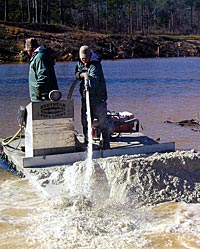
You have control over your alkalinity as well. If you do get a low reading, then you'll want to increase it. Ponds with low alkalinity are susceptible to pH swings that can and will be detrimental to your fish. Fish, crustaceans and most aquatic organisms need a certain amount of calcium in the water they swim in. In fact, it's the only way small fish fry can grow their internal skeletons. Just like you drink milk or take Centrum silver, aquatic organisms and fish absorb it through their skin and exoskeletons. You may have heard of a fellow pondmeister 'liming' his pond and wondered why the heck he did it. Well, liming is the single most effective and affordable way to up the calcium in your pond. Be sure you choose calcium carbonate, not the other forms of calcium.
Where do I want my pH?
Now that we know where our alkalinity needs to be and how to get it there, what level should our pH be? Well, as mentioned earlier, pH levels which occur on either end of the scale can be dangerous, so we want to be somewhere in the middle- between 6.5 and 8.
How do I test my pH?
Now it's time to head out to the pond (I know I won't have to twist your arm here), but you'll need a few things before you go. To test the pH of your pond there are two different angles to choose—electronic pH meters or pH strips.
Litmus tests, or pH strips, are the simplest, but the least accurate, way to test. It involves dropping a bit of your pond's water on a prepared strip of paper—it changes color and you match it to the chart. That's your pH. The more accurate, re-usable, and also more expensive, is the pH meter. It's really just a pen you stick in the water and, bam, it reads out on a digital screen. Keep in mind these gadgets do require occasional calibration and the actual probe on the end must be kept moist.
* Alkalinity testing can be done using simple color changing strips or sophisticated water quality meters known as photometers—for the everyday pond manager the strips do the trick.
Knowing is half the battle

There's no better way to learn about yet another aspect of pond management than to watch your own pond crash and burn with a fish kill. We've all heard of it, most of us have experienced it and none of us would wish it on anybody, even our worst enemies. It's one of the hardest times for a pond manager to get through. After years of feed, TLC, and, of course, investing money, it is a devastating sight to stand by helpless as your fish roll right in front of you.
Most times the scapegoat is low oxygen, but what a lot of owners don't often think about is how their pH might have led to the fish kill. This is especially the case after a heavy rainfall that mixes toxic gases from deep within the pond and pushes the pH back and forth. Often, low oxygen is part of the problem, but the actual problem can be a two-pronged attack on your fish from both swinging pH and low oxygen.
We, as pond managers, need as much intellectual ammo as possible to help our ponds reach their greatest potential. So, check your pH every once in a while and get a handle on your alkalinity—your fish will thank you!
Reprinted with permission from Pond Boss Magazine


